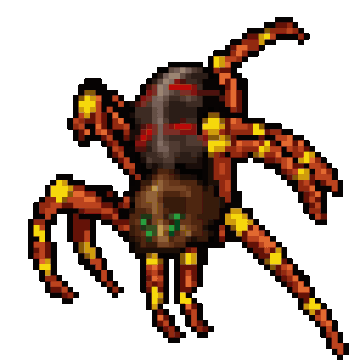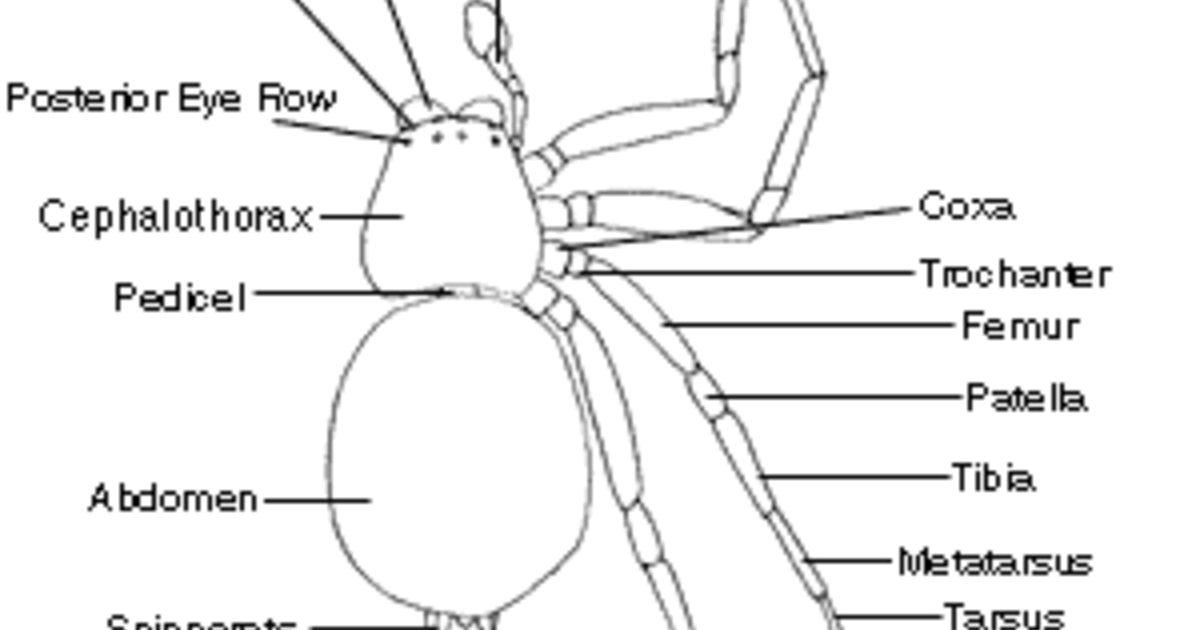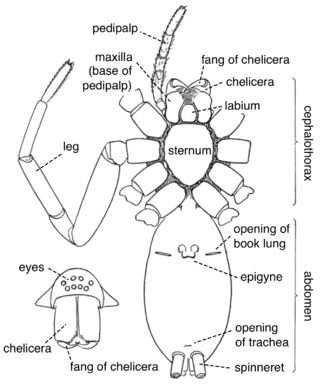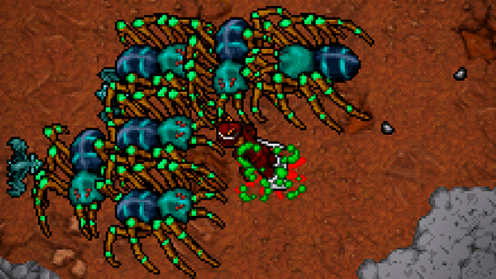PDF] Sensory Biology of Whip Spiders (Arachnida, Amblypygi
Por um escritor misterioso
Last updated 31 março 2025
![PDF] Sensory Biology of Whip Spiders (Arachnida, Amblypygi](https://d3i71xaburhd42.cloudfront.net/c483a4b9d330346831203eaa4dc3bd2a4e642881/3-Figure1-1.png)
Most unusual is the fact that by the giant interneurons are prey capture, fighting, and whip spiders walk only on six legs, not on eight as orientation, unlike "true" spiders do not possess silk ments. Authors Whip spiders belong to a small arachnid order (Amblypygi) Dr. RAINER F. FOELIX, Naturama, Postfach, CH-5001 Aarau. that is not well known. Their most conspicuous feature are Switzerland; rainer.foelix@ag.ch: the elongated, extremely thin front legs ("whips", or antenniDr. EILEEN A. HEBETS, Deptartment of Ecology and Evolutinary form legs). These are no longer used for walking but are moBiology, Univ. of Arizona, Tucson, AZ 85721 USA. dified extremities carrying various sense organs very much like the antennae of insects. Whereas hundreds of olfactory ~ e y words hairs are concentrated near the tip of each antenniform leg, Arachnids, Amblypygi, sensory biology, behavior large bristles (contact chemoreceptors) are evenly distributed over the entire antenniform leg. The sensory hairs of each antenniform leg contribute about 30,000 small sensory axons which proceed toward the central nervous system Introduction (CNS). The sensory fibers originating from the mechanoreceptive bristles make chemical synapses with a few giant Whip spiders even most zoologists have not heard interneurons in the periphery. The giant axons (10-20 pm in of these animals, and even fewer have ever seen one diameter) of these large interneurons transmit nerve impulses in nature. They are 6Lexotic" indeed: although whip spiwith a high velocity (6 to the CNS. The Purpose of this ders are true arachnids (Order Amblypygi) and closely 'fast pathway still needs to be determined. Originally it was thought that the fast giant axons would trigger quick escape related to web spiders (Araneae), they differ in several reactions, but this was not confirmed in physiological experiaspectsUnlike "true" spiders do not possess silk ments. However, other possible behaviors that may be aided glands or poison glands. Most unusual is the fact that by the giant interneurons are prey capture, fighting, and whip spiders walk only on six legs, not on eight as orientation. most other arachnids do. This is because their first what makes whip spiders unique is that both synapses and pair of legs are very thin (< 0.5 mm) and long (up to 30 giant neurons are located far out in the peripheral nervous cm!) and are held out above the ground. These elonsystem. In all other arthropods except for some arachnids synapses and giant fiber systems are always found inside the gated legs greatly insect CNS. never in the ~er i~hew. nae and correspondingly are equipped with thousands . . . Kurzfassung GeiOelspinnen gehBren zu einer klelnen, wenig bekannten Ordnung der Spinnentiere, den Amblypygi. Ihr auffallendstes Merkmal sind die stark verlangerten, extrem dunnen Vorderbeine ("GeiOeln"). Diese werden nicht mehr zum Laufen benutzt, sondern dienen Bhnlich wie die Antennen der lnsekten als Trager verschiedener Sinnesorgane. Wtihrend die GeiReispitze Hunderte von Geruchshaaren aufweist, ist die abrige GeiOel ziemlich gleichmassig mit Borstenhaaren (Kontaktchemorezeptoren) bestilckt. In jeder GeiBel ziehen ca 30.000 kleine sensorische NeWenfaSem zum Zentralnelvensystem (ZNS). Dabei werden die mechanorezeptiven Newenfasern uber chemische Synapsen auf einlge periphere Riesenlnterneurone aufgeschaltet; deren Riesenaxone (10-20 prn 0) leiten Nervenimpulse mlt groRer Geschwindigkeit (6 mls) zum ZNS. Wofur dieses Schnellleitsystem im Verhalten der Tiere einaesetzt wird, ist noch nicht aeklart die urs~riinaof sensory organs that perceive a variety of mechanical and chemical stimuli from their environment (BECK 1968, BECK et al. 1977, HOFER & BECK 1995). The six walking legs also possess sensory hairs (mechanoreceptors for touch and vibrations), but the antenniform first legs provide the main sensory input. Whip spiders deprived of those important first extremities can no longer locate or catch any prey, nor can they orient themselves in their environment (BECK & G ~ R K E 1974;
![PDF] Sensory Biology of Whip Spiders (Arachnida, Amblypygi](https://media.springernature.com/m685/springer-static/image/art%3A10.1186%2Fs12862-017-0931-1/MediaObjects/12862_2017_931_Fig3_HTML.gif)
The phylogeny of fossil whip spiders, BMC Ecology and Evolution
![PDF] Sensory Biology of Whip Spiders (Arachnida, Amblypygi](https://ars.els-cdn.com/content/image/1-s2.0-B978012415919800001X-f01-08-9780124159198.jpg)
The Sensory and Behavioural Biology of Whip Spiders (Arachnida, Amblypygi) - ScienceDirect
![PDF] Sensory Biology of Whip Spiders (Arachnida, Amblypygi](https://ars.els-cdn.com/content/image/1-s2.0-S0044523122000158-gr1.jpg)
Morphometry of the pedipalp patella provides new characters for species-level taxonomy in whip spiders (Arachnida, Amblypygi): A test case with description of a new species of Phrynus - ScienceDirect
![PDF] Sensory Biology of Whip Spiders (Arachnida, Amblypygi](https://i1.rgstatic.net/publication/343954933_Genomic_resources_and_toolkits_for_developmental_study_of_whip_spiders_Amblypygi_provide_insights_into_arachnid_genome_evolution_and_antenniform_leg_patterning/links/5fc45f5ba6fdcc6cc683e60a/largepreview.png)
PDF) Genomic resources and toolkits for developmental study of whip spiders (Amblypygi) provide insights into arachnid genome evolution and antenniform leg patterning
![PDF] Sensory Biology of Whip Spiders (Arachnida, Amblypygi](https://media.springernature.com/m685/springer-static/image/art%3A10.1186%2Fs13227-020-00163-w/MediaObjects/13227_2020_163_Fig3_HTML.png)
Genomic resources and toolkits for developmental study of whip spiders ( Amblypygi) provide insights into arachnid genome evolution and antenniform leg patterning, EvoDevo
![PDF] Sensory Biology of Whip Spiders (Arachnida, Amblypygi](https://ars.els-cdn.com/content/image/1-s2.0-B978012415919800001X-f01-09-9780124159198.jpg)
The Sensory and Behavioural Biology of Whip Spiders (Arachnida, Amblypygi) - ScienceDirect
![PDF] Sensory Biology of Whip Spiders (Arachnida, Amblypygi](https://i1.rgstatic.net/publication/286841963_Chelicerata/links/5a29b41445851552ae76e486/largepreview.png)
PDF) Chelicerata
![PDF] Sensory Biology of Whip Spiders (Arachnida, Amblypygi](https://zoologia.pensoft.net/showimg/d200x_193983.jpg)
On the habitat use of the Neotropical whip spider Charinus asturius ( Arachnida: Amblypygi)
![PDF] Sensory Biology of Whip Spiders (Arachnida, Amblypygi](https://bioone.org/ContentImages/Journals/arac/43/2/J15-04/graphic/i0161-8202-43-2-214-f01.jpg)
Cave-epigean behavioral variation of the whip spider Phrynus longipes ( Arachnida: Amblypygi) evidenced by activity, vigilance, and aggression
![PDF] Sensory Biology of Whip Spiders (Arachnida, Amblypygi](https://i1.rgstatic.net/publication/311066365_Whip_spiders_Amblypygi_become_water-repellent_by_a_colloidal_secretion_that_self-assembles_into_hierarchical_microstructures/links/583ce98008ae502a85e3ed8b/largepreview.png)
PDF) Whip spiders (Amblypygi) become water-repellent by a colloidal secretion that self-assembles into hierarchical microstructures
![PDF] Sensory Biology of Whip Spiders (Arachnida, Amblypygi](https://i1.rgstatic.net/publication/329792161_Also_looking_like_Limulus_-_retinula_axons_and_visual_neuropils_of_Amblypygi_whip_spiders/links/5c1b7949299bf12be38c9561/largepreview.png)
PDF) Also looking like Limulus? – retinula axons and visual neuropils of Amblypygi (whip spiders)
![PDF] Sensory Biology of Whip Spiders (Arachnida, Amblypygi](https://media.springernature.com/lw685/springer-static/image/art%3A10.1186%2Fs13227-020-00163-w/MediaObjects/13227_2020_163_Fig8_HTML.png)
Genomic resources and toolkits for developmental study of whip spiders ( Amblypygi) provide insights into arachnid genome evolution and antenniform leg patterning, EvoDevo
![PDF] Sensory Biology of Whip Spiders (Arachnida, Amblypygi](https://bioone.org/ContentImages/Journals/novi/2023/4000/4000.1/graphic/WebImages/img-z25-1_01.jpg)
Systematic Revision of the Whip Spider Family Paracharontidae (Arachnida: Amblypygi) with Description of a New Troglobitic Genus and Species from Colombia
Recomendado para você
-
 Giant Spider, TibiaWiki31 março 2025
Giant Spider, TibiaWiki31 março 2025 -
 Megatibia Trocando Spider silk por Spool of yarn31 março 2025
Megatibia Trocando Spider silk por Spool of yarn31 março 2025 -
 Pear-shaped Opadometa fastigata P2090844, This spider has t…31 março 2025
Pear-shaped Opadometa fastigata P2090844, This spider has t…31 março 2025 -
 Parts Of A Spider Male Spider Dorsal View31 março 2025
Parts Of A Spider Male Spider Dorsal View31 março 2025 -
Hunt for Paladins level 150+ in Exotic Cave (Diamonds + GFBs31 março 2025
-
 Glossary of spider terms - Wikipedia31 março 2025
Glossary of spider terms - Wikipedia31 março 2025 -
 Proprioreceptive hair sensilla of C. salei at the tibia-metatarsus31 março 2025
Proprioreceptive hair sensilla of C. salei at the tibia-metatarsus31 março 2025 -
 Silk fibroin scaffolds for common cartilage injuries31 março 2025
Silk fibroin scaffolds for common cartilage injuries31 março 2025 -
![Filleman's lifethread! [MS]](https://otland.net/proxy.php?image=https%3A%2F%2Fi.imgur.com%2Fb2ilY.png&hash=cc409abb21be85f8decde37fd897b859) Filleman's lifethread! [MS]31 março 2025
Filleman's lifethread! [MS]31 março 2025 -
 Task:Oramond Citizen - Tibia Wiki31 março 2025
Task:Oramond Citizen - Tibia Wiki31 março 2025
você pode gostar
-
 Tiendamia del mundo a tu puerta31 março 2025
Tiendamia del mundo a tu puerta31 março 2025 -
Double Trouble, Villain Song Wiki31 março 2025
-
:max_bytes(150000):strip_icc():focal(359x99:361x101)/kim-kardashian-marilyn-monroe-e9449e438b9c4859a0412630f6998a3c.jpg) Bob Mackie Criticizes Kim Kardashian's Marilyn Monroe Dress Rewear31 março 2025
Bob Mackie Criticizes Kim Kardashian's Marilyn Monroe Dress Rewear31 março 2025 -
 ID DE ROUPA NERD PRA USAR NO BROOKHAVEN RP31 março 2025
ID DE ROUPA NERD PRA USAR NO BROOKHAVEN RP31 março 2025 -
 Chanticleer by Mills Publishing Inc. - Issuu31 março 2025
Chanticleer by Mills Publishing Inc. - Issuu31 março 2025 -
 Hunter X Hunter Anime Merch Movie Posters Graphic Gon Killua Wall Art Manga Series TV Show Kids Bedroom Home Decorations Birthday Gift Cool Wall Decor Art Print Poster 12x18: Posters31 março 2025
Hunter X Hunter Anime Merch Movie Posters Graphic Gon Killua Wall Art Manga Series TV Show Kids Bedroom Home Decorations Birthday Gift Cool Wall Decor Art Print Poster 12x18: Posters31 março 2025 -
 BF4 #Firstperson #Shooter Battlefield 4 Premium Edition KUNLUN MOUNTAIN Part 1, Mission 5 بتلفیلد31 março 2025
BF4 #Firstperson #Shooter Battlefield 4 Premium Edition KUNLUN MOUNTAIN Part 1, Mission 5 بتلفیلد31 março 2025 -
 Dilara'nın gözlerinden, Rüzgarın Kalbi'ne - 231 março 2025
Dilara'nın gözlerinden, Rüzgarın Kalbi'ne - 231 março 2025 -
 Call Of Duty Mega com Preços Incríveis no Shoptime31 março 2025
Call Of Duty Mega com Preços Incríveis no Shoptime31 março 2025 -
my avatar roblox 2015 - 2023 #roblox #robloxedit #robloxmalaysia #robl31 março 2025


